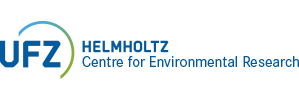XomeTox - Evaluating multi-omics integration for assessing rodent thyroid toxicity
Integrating multiple molecular-level data streams to understand (a) range of normal adaptation vs pathology and (b) molecular generated gene expression changes and persistence over time.
The CEFIC website providing information about the project can be found here.
Problem definition
Exposure to chemicals triggers a series of effects at the molecular level. Regulatory pathways involved in such responses exhibit changes of levels, interactions, and feedback loops of biomolecules of different types that are active in complex networks.
Different omics techniques are essential for measuring responses in an untargeted manner on the molecular level. Importantly, a single omics technique e.g. transcriptomics, will detect biomolecules of one type and thus captures changes only for a small subset of the components of a particular pathway. Therefore, applying single omics analyses in response to a toxicant in a non-continuous design led to the identification of biomarkers for certain exposures but not to a systemic understanding of toxicity pathways or adverse outcome pathways (AOPs) in the past. Also, this incomplete representation of pathways in single omics data limits the ability to discriminate adaptive from adverse molecular responses.
Objectives
A substantial improvement in detecting the pathway response to a toxicant can be achieved by using multi-omics data in a time- and concentration-resolved design, which has been recently propounded in an opinion article (Escher, Hackermüller et al. 2017). It will initially compile a collection of existing multi-omics data sets, including the integration of BASF-generated metabolomics data with published omics data sets, to:
Evaluate various published and in house developed integrative analysis approaches for multi-omics data, in particular making use of an approach we have recently developed to integrate proteomics and transcriptomics data which combines network inference and comparative genomics Identify criteria for an optimal design of a multi-omics toxicity study.
Based on the lessons learnt, project representatives will perform an oral rat toxicity study focusing on direct and indirect thyroid toxicity. Biomaterials from this study will be used to generate transcriptomics, proteomics, and metabolomics data sets. Featuring a time- and concentration-resolved design including recovery after treatment this study allows investigating adaptive versus adverse effects in several dimensions. Using this multi-omics data set, the project aims to:
- Detect toxicant-triggered re-wiring of regulatory networks and changes of master-regulators, including non-coding RNAs, that link to adverse-outcomes.
- Evaluate whether time- and concentration-resolved multi-omics data enable the prediction of adversity.
- Evaluate whether a deep machine learning approach may assist in discriminating adaptive versus adverse perturbations of regulatory networks.
- Assess whether such integrative analyses enable discriminating toxicant-induced versus disease-caused, secondary perturbations.
- Determine to what extent individual omics experiments contribute to the predictive power of such an approach.
Given that most toxicogenomics studies investigate exposure to one concentration at one time point using a single omics technique, the approach significantly advances the state of the art – in the design of the animal experiment, the multi-omics perspective, and the innovative bioinformatic analyses it proposes.
Funded by: CEFIC LRI
Duration: 07/2018 - 12/2023
Related own publications:
Assessing the influence of propylthiouracil and phenytoin on the metabolomes of the thyroid, liver, and plasma in a rats (2023).
https://doi.org/https://doi.org/10.3390/metabo13070847
Quantitative proteomics reveal mechanistic insights into direct and indirect drug-induced thyroid toxicity in rats (2021).
https://doi.org/http://dx.doi.org/10.1016/S0378-4274(21)00550-6
Prospects and challenges of multi-omics data integration in toxicology (2020).
https://doi.org/10.1007/s00204-020-02656-y
multiGSEA: a GSEA-based pathway enrichment analysis for multi-omics data (2020).
https://doi.org/10.1186/s12859-020-03910-x
Related own data sets:
Extended rat miRNA repertoire (2024)
https://zenodo.org/doi/10.5281/zenodo.12626179
Mechanistic study on direct and indirect thyroid toxicity in male Wistar rats - Transcriptomics (2023)
https://www.ncbi.nlm.nih.gov/bioproject/?term=PRJNA695243
Mechanistic study on direct and indirect thyroid toxicity in male Wistar rats - Serum Metabolomics (2022)
https://zenodo.org/doi/10.5281/zenodo.5900663
Mechanistic study on direct and indirect thyroid toxicity in male Wistar rats - Tissue Metabolomics (2022)
http://dx.doi.org/10.21228/M8MD8N
Mechanistic study on direct and indirect thyroid toxicity in male Wistar rats - Proteomics (2022)
https://www.ebi.ac.uk/pride/archive/projects/PXD026835
Mechanistic study on direct and indirect thyroid toxicity in male Wistar rats - Phosphoproteomics (2022)
https://www.ebi.ac.uk/pride/archive/projects/PXD030254
Related own software:
Authors
Sebastian Canzler, Jörg Hackermüller
Summary
Gaining biological insights into molecular responses to treatments or diseases from omics data can be accomplished by gene set or pathway enrichment methods. A plethora of different tools and algorithms have been developed so far. Among those, the gene set enrichment analysis (GSEA) proved to control both type I and II errors well.
In recent years the call for a combined analysis of multiple omics layer became prominent, giving rise to a few multi-omics enrichment tools. Each of which has its own drawbacks and restrictions regarding its universal application.
Here, we present the multiGSEA package aiding to calculate a combined GSEA-based pathway enrichment on multiple omics layer. The package queries 8 different pathway databases and relies on the robust GSEA algorithm for a single-omics enrichment analysis. In a final step, those scores will be combined to create a robust composite multi-omics pathway enrichment measure. multiGSEA supports 11 different organisms and includes a comprehensive mapping of transcripts, proteins, and metabolite IDs.
Important links
| Software download | https://github.com/yigbt/multiGSEA |
| Documentation | http://bioconductor.org/packages/release/bioc/vignettes/multiGSEA/inst/doc/multiGSEA.html |
| Bioconductor devel package | https://bioconductor.org/packages/devel/bioc/html/multiGSEA.html |
| Citation | Sebastian Canzler, Jörg Hackermüller. multiGSEA: A GSEA-based pathway enrichment analysis for multi-omics data. BMC Bioinformatics 21, 561 (2020). https://doi.org/10.1186/s12859-020-03910-x |
